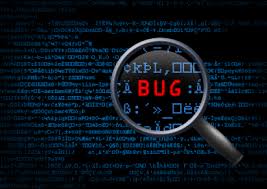Introduction
Whether you’re a fresh learner in the world of coding and programming or a developer of Jarvis or Nasa’s Software, one thing that remains true forever is debugging the code, believe me or not debugging is an undetachable part of the software engineering journey. The process is never-ending because no matter how good your code is, bugs and glitches can always find their way. This is where a debugger's work starts. Let's see some tricks and tricks on “How a debugger can create their bug report” which can help not only in impressing your manager and be a win-win to others who read and try to understand too but also help simplify and resolve the bug at the earliest.
Understanding about Bug Report
Honestly from the word It may definitely sound like something very complex, but it's just notes created by someone who found a bug, when a bug is detected it is recorded in the report and then the team tries to resolve the bug. The bug report doesn't stop. Basically, the work of a report is to make the process easier for experts to understand the problem and find a solution quickly.
These things make a Bug Report Great
Bug reports have important parts that make them useful. Let's check why they matter:
A bug report requires a short and clear title. This title is like the heading of a news story. It tells developers what needs to be debugged in a quick and easy way.
Example:
❌ Bad: "I don't understand why this code isn't working. It's so frustrating and confusing. Can someone help me figure it out?"
Vague, emotional, lacks specific details about the code issue
seeks immediate assistance without providing context
✅ Good: "PYTHON - Issue with Function Not Returning Expected Output"
It highlights the programming language (PYTHON)
It specifies the problem area (Function)
It focuses on the discrepancy in the output (Not Returning Expected Output)
Importance of a Detailed Summary :
Summary is the "quickest version" of the bug report. In just a few sentences, you explain what exactly the bug is and where it is located. Details that matter are like the date and what you were doing when you found the bug. This helps developers understand the situation faster.
Examples:
❌ Bad: "Yesterday, I was working on my website and something strange happened when I tried to submit a form. It didn't work properly."
✅ Good: "On [DATE], while testing the contact form on my website, I encountered an issue where the form submission was not functioning as expected."
Sometimes, words seem unable to describe a problem. That's where visual proof comes in – like a picture or a video. Screenshots or videos help developers see exactly what you saw, making it easier for them to figure out what's going wrong.
And Guess what?
If you're interested in upgrading your coding skills, especially in software testing, you have a variety of options available. There are both online and offline courses according to your own understanding preferences. Online platforms like Udemy, Coursera, and LinkedIn Learning offer courses on software testing. These platforms allow you to learn at your own pace. However, You could also consider attending offline in major cities like Software Testing Training Institute in Lucknow, Delhi, Noida, Mumbai, and more. These centres often offer live classes, competitions, and real testing where you can engage directly with well-experienced instructors and fellow learners. This type of coding environment can be very beneficial if you believe in direct interaction, guidance and quick responses to your doubts.
Now, back to our bug report journey.
Expected vs. Actual Results :
Here, you explain what you thought that should have happened and what really happened. Basically, you spot differences between the both of them. This helps developers know exactly what's not working as it should.
Examples:
Expected result: "Upon clicking the ADD button, the item should be successfully added to the cart."
Actual result: "After clicking the ADD button, the item does not appear in the cart as expected."
When it comes to fixing bugs in software, console logs are your secret decoder. console logs as messages left behind by your computer program. show developers any errors that happened on a webpage. They can also track what you did on a webpage, like a play-by-play of your actions. This helps developers recreate the scene and understand exactly how the bug showed up. Console logs act like a roadmap, guiding developers through the chaos.
Adding Advanced Information :
Including your reporter's name adds a personal touch to your bug report. It's like saying, "Hey, I found this issue, and I'm here to help!" Your name lets developers know who to reach out to if they need more info. When you mention who's in charge of tackling the bug, it streamlines the process – usually a developer. Deadlines keep things moving smoothly.
Conclusion
When you put all these parts together, you create a Bug report. It helps debuggers understand the problem, know what bug to fix, and work together to make the code better and bug-free. Each part of a bug report plays an important and effective role in creating a complete and effective report.





